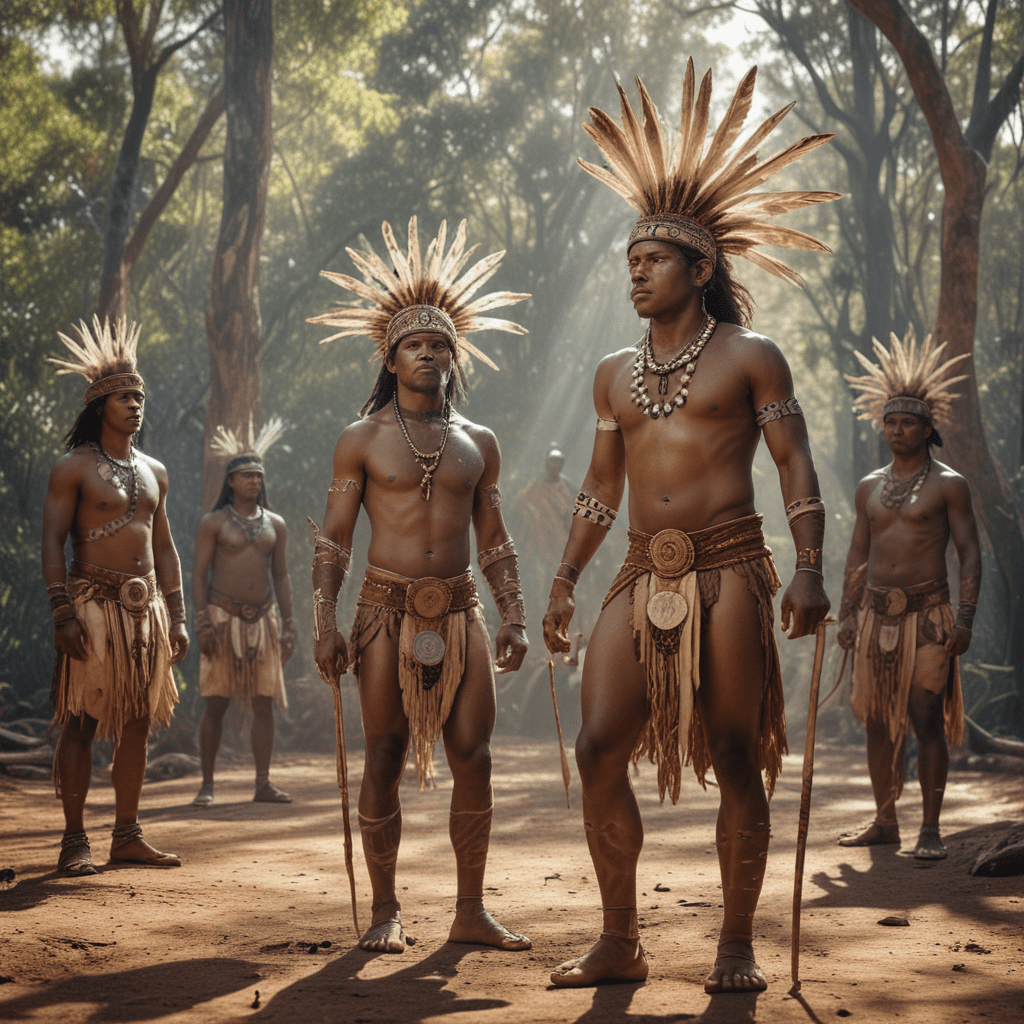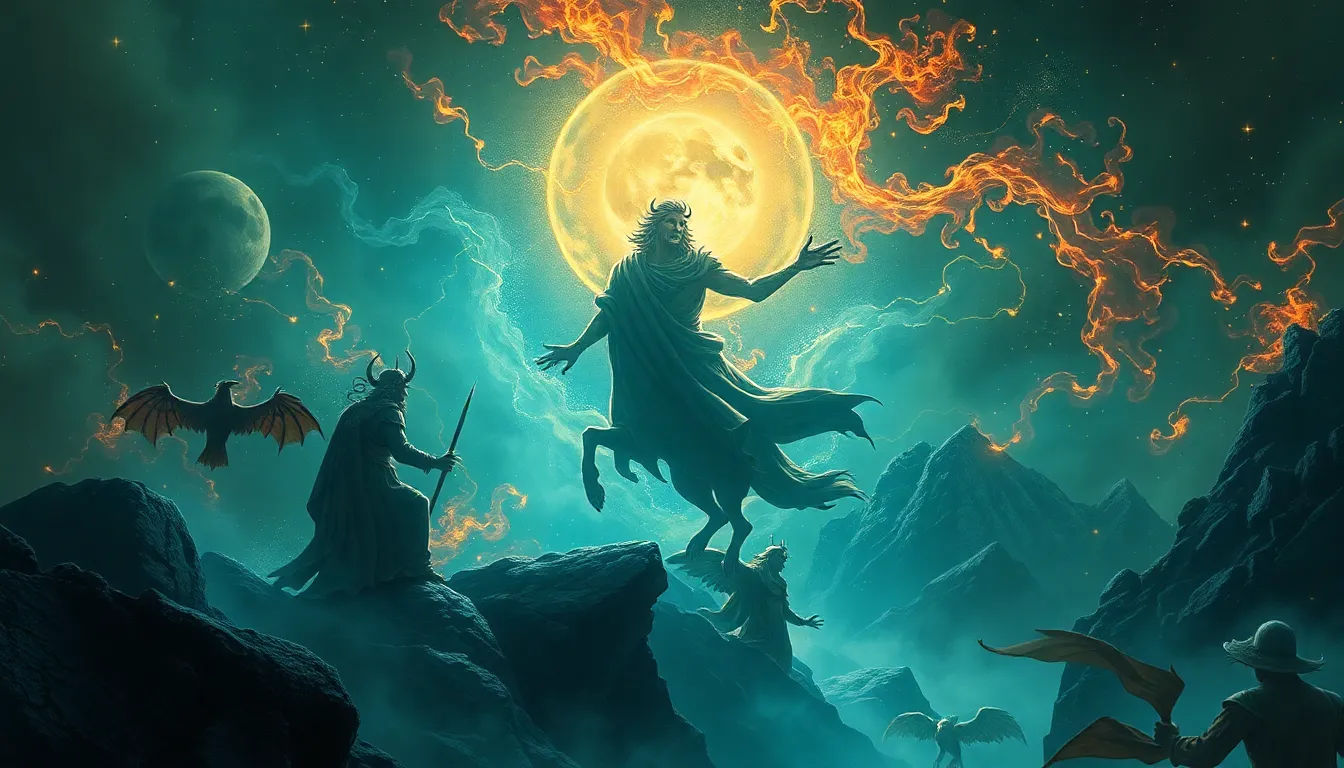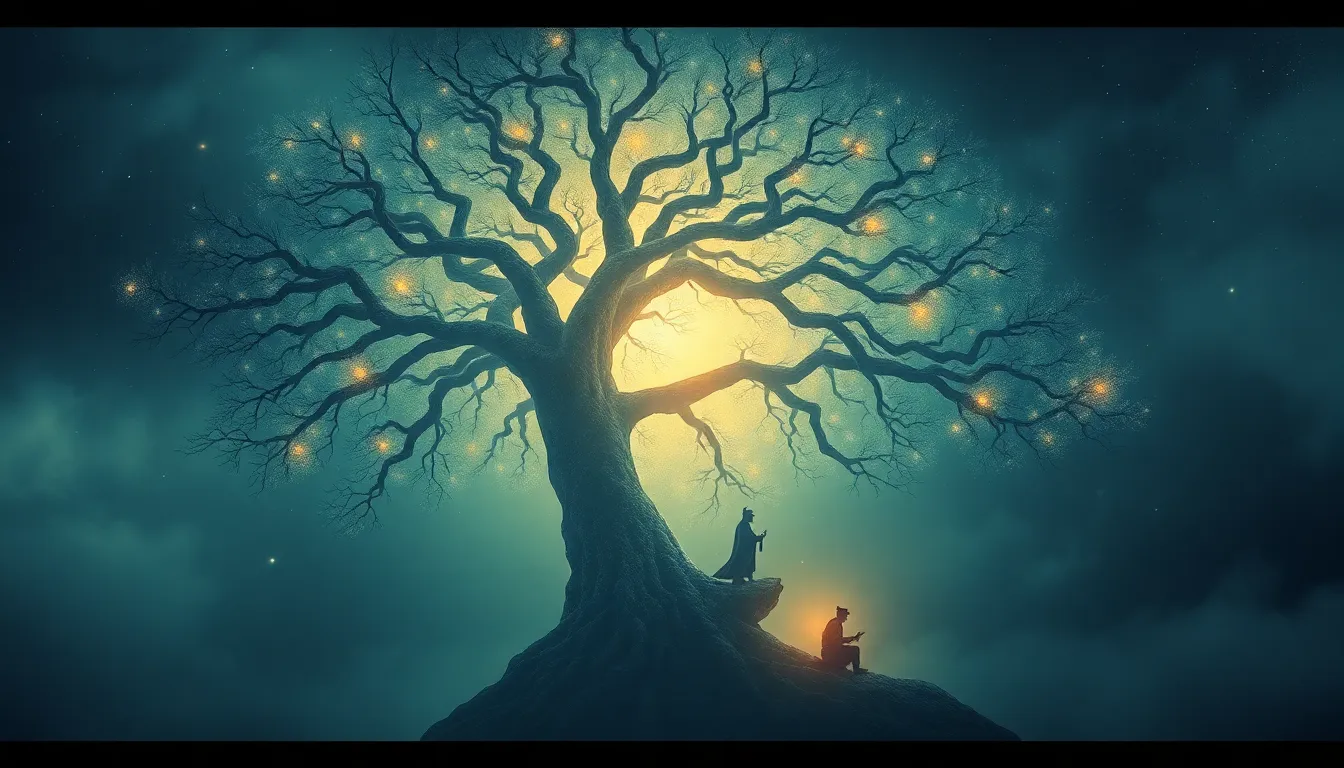Rituals and Ceremonies in Australian Aboriginal Mythology
Australian Aboriginal mythology is richly imbued with rituals and ceremonies that have shaped the cultural fabric of the Indigenous communities for millennia. These rituals are deeply connected to the spiritual beliefs and cosmological narratives of the Dreamtime, and they serve to mark important life stages, reinforce cultural values, and maintain harmony with the natural world.
The Dreamtime and its Importance
The Dreamtime, a central concept in Aboriginal mythology, is an epoch of creation where ancestral beings shaped the landscape, created living beings, and established the laws governing the world. These beings are believed to reside in the Dreamtime, accessible through dreams, rituals, and totemic connections. Rituals and ceremonies are seen as a means of connecting with the Dreamtime and its ancestral powers.
Initiation Rituals: Entry into Adulthood
Initiation rituals, also known as walkabouts, are pivotal in the lives of young Aboriginal men and women. These rituals mark the transition from childhood to adulthood and involve extensive physical challenges, spiritual teachings, and the acquisition of restricted knowledge and cultural responsibilities. Through these rituals, young people learn the sacred laws, hunting and gathering techniques, and the secrets of their Dreamtime ancestors.
Totemic Ceremonies: Connection to Ancestral Beings
Totemic ceremonies are performed to honor and connect with ancestral beings that serve as totems for specific clans or groups. These totems, often animals or natural phenomena, are believed to have created and protected the group and are central to their identity. Totemic ceremonies involve storytelling, songs, and dances that recount the Dreamtime stories and reinforce the spiritual bonds between the people and their totems.
Corroborees: Dance, Music, and Storytelling
Corroborees are elaborate performances that combine dance, music, and storytelling. They are central to Aboriginal social and cultural life and are often performed during religious ceremonies, festivals, and public gatherings. Corroborees serve as a means of passing down cultural knowledge, teaching morality, and celebrating the Dreaming. They involve intricate body movements, rhythmic chanting, and the use of traditional instruments.
Smoking Ceremonies: Cleansing and Purification
Smoking ceremonies are performed to cleanse and purify people, places, and objects. They are often used to welcome guests, mark important events, or promote healing. The smoke, from burning native plants such as eucalyptus or gum leaves, is believed to have spiritual properties that purify and protect. During a smoking ceremony, participants are enveloped in the smoke, absorbing its healing and cleansing energies.
Marriage Rites: Union and Kinship
Marriage rites are integral to Aboriginal social and cultural life, establishing kinship ties and reinforcing family bonds. These rites involve complex rituals, ceremonies, and gift exchanges that vary among different Indigenous groups. Marriage is often seen as a union between two individuals and their respective clans, creating alliances and strengthening the social network.
Funeral Ceremonies: Transition into the Dreamtime
Funeral ceremonies are deeply rooted in the belief that death is a transition into the Dreamtime. These ceremonies honor the deceased and facilitate their journey into the afterlife. They involve elaborate mourning rituals, body painting, and burial practices that vary according to cultural traditions. Funeral ceremonies also serve to provide support and comfort to the bereaved family and community.
Seasonal Rituals: Harmony with the Natural World
Seasonal rituals are performed to mark significant changes in the natural world and ensure the continuity of life. These rituals, often tied to the cycles of the sun, moon, and seasons, aim to maintain balance and harmony between humans and the environment. They involve ceremonies, dances, and songs that honor the ancestral beings responsible for the changing seasons and the provision of food and water.
Healing Ceremonies: Spiritual and Physical Well-being
Healing ceremonies are performed to address both physical and spiritual illnesses. They involve the participation of traditional healers, known as elders or medicine men and women. These ceremonies use natural medicines, chanting, and rituals to restore balance and promote well-being. Healing ceremonies play a vital role in maintaining the health and vitality of Aboriginal communities.
Contemporary Adaptations: Rituals in Modern Life
In contemporary times, Aboriginal rituals and ceremonies continue to evolve and adapt to changing circumstances. While traditional practices remain core to Indigenous identity, many communities have incorporated modern elements into their rituals. These adaptations include the use of contemporary music, dance styles, and art forms, reflecting the dynamic nature of Aboriginal culture in the 21st century.
FAQs
What is the significance of the Dreamtime in Aboriginal rituals and ceremonies?
The Dreamtime is central to Aboriginal spirituality and provides the foundation for their rituals and ceremonies. It is believed to be a period when ancestral beings created the world and established the laws and traditions that govern life.
How do initiation rituals contribute to the development of young people?
Initiation rituals are a rite of passage that marks the transition from childhood to adulthood. They involve physical and spiritual challenges that test the resilience and maturity of young people. Through these rituals, they learn important hunting and gathering techniques, cultural responsibilities, and the secrets of their Dreamtime ancestors.
What role do totemic ceremonies play in Aboriginal identity?
Totemic ceremonies honor and connect with ancestral beings that serve as totems for specific clans or groups. These totems are believed to have created and protected the group and are central to their identity. Totemic ceremonies help reinforce the spiritual bonds between the people and their totems.
How have Aboriginal rituals and ceremonies adapted to modern society?
While traditional practices remain core to Indigenous identity, many communities have incorporated modern elements into their rituals and ceremonies. These adaptations include the use of contemporary music, dance styles, and art forms, reflecting the dynamic nature of Aboriginal culture in the 21st century.


